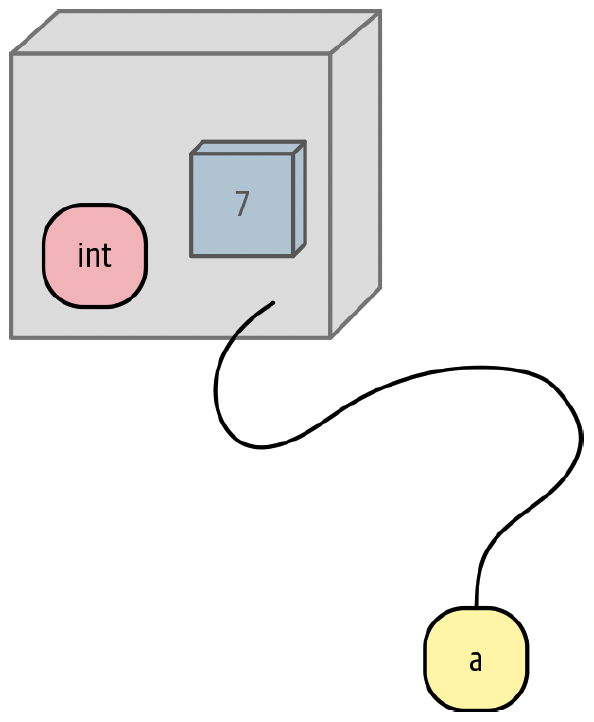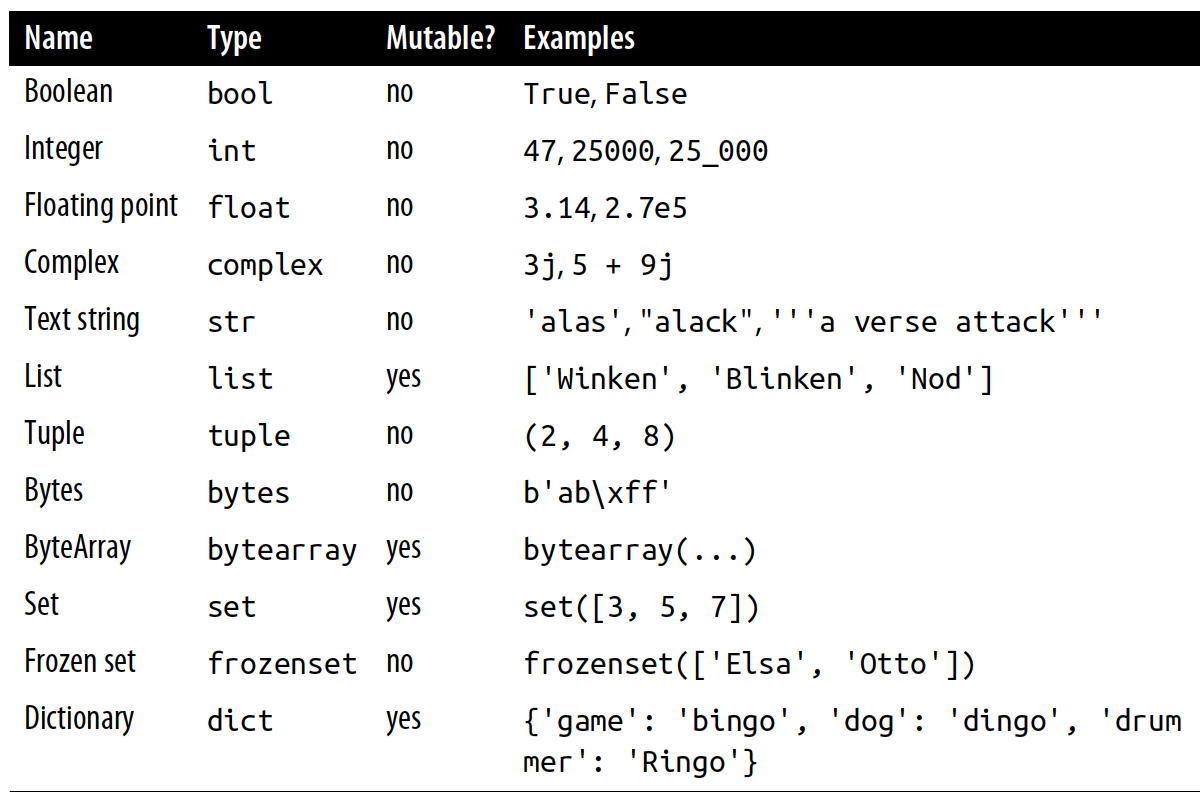Lecture 4
Python Basics - Variables; Assignments; Data Types; Operators; Casting Values; Data Containers
January 31, 2025
Python Basics
Variables Are Names, Not Places

A value is datum (literal) such as a number or text.
There are different types of values:
- 352.3 is known as a float or double;
- 22 is an integer;
- “Hello World!” is a string.
Values, Variables, and Types

- A variable is a name that refers to a value.
- We can think of a variable as a box that has a value, or multiple values, packed inside it.
- A variable is just a name!
Values, Variables, and Types
Sometimes you will hear variables referred to as objects.
Everything that is not a literal value, such as
10, is an object.
Variable in DataFrame

- Definition: A
data.frameis a table-like data structure used for storing data in a tabular format with rows and columns. - Structure: Consists of:
- Variables (Columns)
- Observations (Rows)
- Values (Cells): Individual data points within each cell of the
data.frame.
Assignment ( = )
# Here we assign the integer value 5 to the variable x.
x = 5
# Now we can use the variable x in the next line.
y = x + 12
yIn Python, we use
=to assign a value to a variable.In math,
=means equality of both sides.In programs,
=means assignment: assign the value on the right side to the variable on the left side.
Code and comment style
- The two main principles for coding and managing data are:
- Make things easier for your future self.
- Don’t trust your future self.
- The
#mark is Google Colab’s comment character.- The
#character has many names:hash,sharp,pound, oroctothorpe. #indicates that the rest of the line is to be ignored.- Write comments before the line that you want the comment to apply to.
- The
- Consider adding more comments on code cells and their results using text cells.
Assignment ( = )
- In programming code, everything on the right side needs to have a value.
- The right side can be a literal value, or a variable that has already been assigned a value, or a combination.
- When Python reads
y = x + 12, it does the following:- Sees the
=in the middle. - Knows that this is an assignment.
- Calculates the right side (gets the value of the object referred to by
xand adds it to12). - Assigns the result to the left-side variable,
y.
- Sees the
Variables Are Names, Not Places
- The most basic built-in data types that we’ll need to know about are:
- integers
10 - floats
1.23 - strings
"like this" - booleans
True - nothing
None
- integers
- Python also has a built-in type of data container called a list (e.g.,
[10, 15, 20]) that can contain anything, even different types
Data Types

The second column (Type) contains the Python name of that type.
The third column (Mutable?) indicates whether the value can be changed after creation.
Brackets
- There are several kinds of brackets in Python, including
[],{}, and().
[]is used to denote a list or to signify accessing a position using an index.
{}is used to denote a set or a dictionary (with key-value pairs).
Operators
string_one = "This is an example "
string_two = "of string concatenation"
string_full = string_one + string_two
print(string_full)- All of the basic operators we see in mathematics are available to use:
+for addition-for subtraction
*for multiplication**for powers
/for division//for integer division
- These work as you’d expect on numbers.
- These operators are sometimes defined for other built-in data types too.
- We can ‘sum’ strings (which really concatenates them).
Operators
Operators
Using Python operations only, calculate below: \[\frac{2^5}{7 \cdot (4 - 2^3)}\]
Casting Variables
Sometimes we need to explicitly cast a value from one type to another.
- We can do this using built-in functions like
str(),int(), andfloat(). - If we try these, Python will do its best to interpret the input and convert it to the output type we’d like and, if they can’t, the code will throw a great big error.
- We can do this using built-in functions like
Tuples and (im)mutability
A tuple is an object that is defined by parentheses and entries that are separated by commas, for example
(15, 20, 32). (They are of type tuple.)Tuples are immutable, while lists are mutable.
Immutable objects, such as tuples and strings, can’t have their elements changed, appended, extended, or removed.
- Mutable objects, such as lists, can do all of these things.
In everyday programming, we use lists and dictionaries more than tuples.
Dictionaries
cities_to_temps = {"Paris": 28, "London": 22, "New York": 36, "Seoul": 29}
cities_to_temps.keys()
cities_to_temps.values()
cities_to_temps.items()- Another built-in Python type that is enormously useful is the dictionary.
- This provides a mapping one set of variables to another (either one-to-one or many-to-one).
- If you need to create associations between objects, use a dictionary.
- We can obtain keys, values, or key-value paris from dictionaries.
Running on Empty
Being able to create empty containers is sometimes useful, especially when using loops.
The commands to create empty lists, tuples, dictionaries, and sets are
lst = [],tup=(),dic={}, andst = set()respectively.Q. What is the type of an empty list?
Google Colab Settings
Turn off AI Assistance
- On Google Colab
- From the top-right corner, click ⚙️
- Click “AI Assistance” from the side menu.
- Disable all options.